
Kinder Houston Area Survey: 2025 Results
Houston continues to grow — economically, demographically and culturally.

Kinder Houston Area Survey: 2025 Results
Houston continues to grow — economically, demographically and culturally.

For many of the nearly 177,000 students in Houston ISD, access to food, clothing, shelter, health care, school supplies and other resources poses a barrier to success in the classroom. The district is counting on its Sunrise Centers to help meet those needs — and a research partnership to ensure they deliver meaningful impact on student outcomes.

Aldine ISD: Social and Emotional Learning (SEL) Skills and Campus Discipline Outcomes
The Kinder Institute for Urban Research’s Houston Education Research Consortium partnered with Aldine ISD, an urban school district serving predominantly economically disadvantaged and minority students, to better understand how self-reported teacher and student SEL skills were associated with campus disciplinary practices.
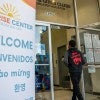
Sunrise Centers: Strengths, Challenges, and Recommendations to Enhance Family and Student Well-Being
This four-part series examines the first-year implementation of the Houston Independent School District’s (HISD) Sunrise Centers.

89th Texas Legislative Session: Priorities and Policy Views
This survey snapshot examines the top priorities for the 89th Texas Legislature among residents across the Greater Houston area, including Fort Bend, Harris and Montgomery counties.

Characteristics and Profiles of Pre-K Classrooms and Teachers in the Houston Region
This brief examines the characteristics of public pre-K teachers and classrooms in Houston-area school districts to better understand how well the programs align with research-based indicators that have been shown to produce positive student outcomes.

Student Enrollment and Mobility During the COVID-19 Pandemic
The Kinder Institute for Urban Research examined patterns of student mobility, specifically students changing schools or school districts, in Houston-area school districts during the COVID-19 pandemic.
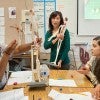
This dashboard connects localized workforce data to career and technical education (CTE) pathways in the Houston region to help improving the alignment between education, training, and workforce need.
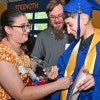
How Houston's only public recovery high school is creating new paths for student success
Of all youth in Harris County, high schoolers had the highest rate of substance-involved health care facility visits and deaths from 2018-22, according to a new report.

Bilingualism is a strength Texas is failing to nurture for hundreds of thousands of students
Nearly one-fourth of all students in Texas public schools are emergent bilingual, meaning their home language is something other than English. Spanish is the most common home language among emergent bilingual students in the state, but over 60 languages are represented.
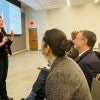
Making the case for increasing funding for Texas schools that need it most
Seventy percent of Houstonians believe schools need “significantly more” money to provide a quality education to students, a sentiment that has grown stronger since the Kinder Houston Area Survey began asking this question in the early 1990s.

Middle School Experiences and Exit: Perspectives From Parents
This study utilizes parent survey and interview data to study motivations behind middle school student mobility.
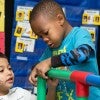
How public pre-K sets Houston’s students on a path to success
In 2023-24, over 50,000 children attended public prekindergarten in the Houston area, bringing overall enrollment near to pre-pandemic levels.

Pre-K Enrollment and Early Elementary Outcomes
This series examines the influence of the passage of Texas House Bill 3 (HB3) and COVID-19 pandemic on public pre-K enrollment and attendance. It also looks at how participation in public pre-K programs is associated with early elementary outcomes such as kindergarten readiness, chronic absenteeism, and English proficiency.

Kinder Institute Luncheon 2024
The 2024 Kinder Institute Luncheon will honor Dr. Marc. L. Boom, president and CEO of Houston Methodist. Findings from the 43rd Kinder Houston Area Survey will also be shared.
Rice University
Kraft Hall
6100 Main Street, Suite 305
Houston, TX 77005-1892